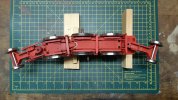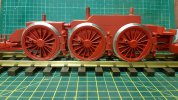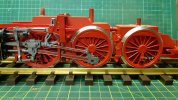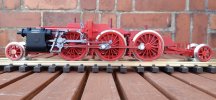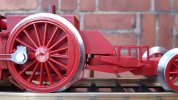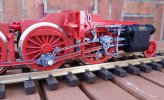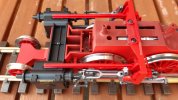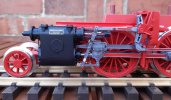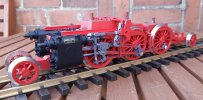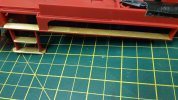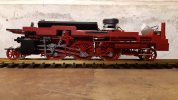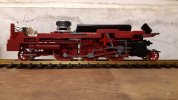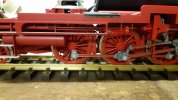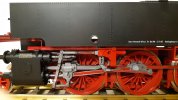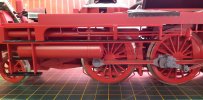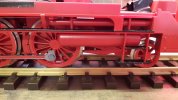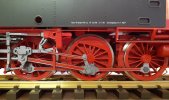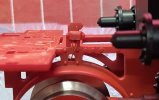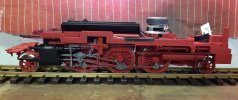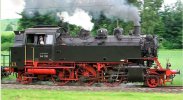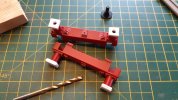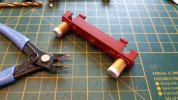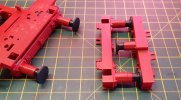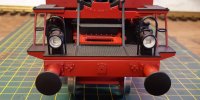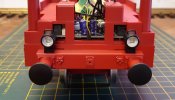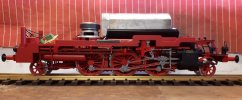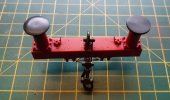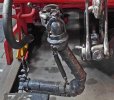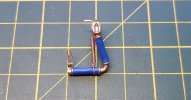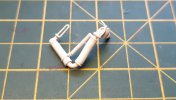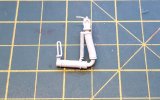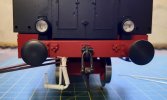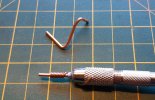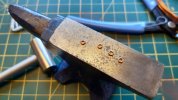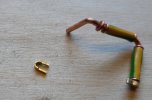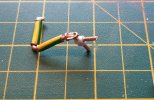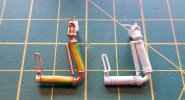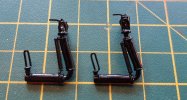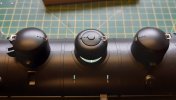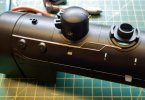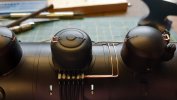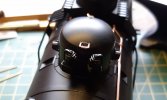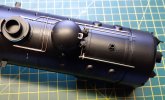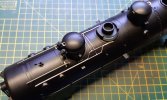Moving on to the tanks I've replaced the moulded lifting hooks, added rivets to the base plates and the remote opening mechanism for the lids that allowed the crew to open them from inside the cab.
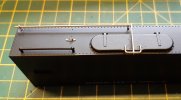
Here's the pair completed before priming and painting black.
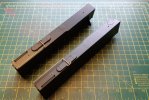
And after painting. I've also added some etched chequer plate to the steps which again were plain as it comes from Piko.
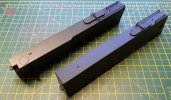
The lifting hooks on the bunker have also been replaced and rivets added to the hook bases.
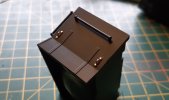
While the bunker is off the model I thought it made sense to add the coal. First I taped over the slot on the top plate to prevent the PVA dropping through.

To keep the coal from overlapping the open bunker edge and preventing the bunker locating correctly against the cab rear, I taped a piece of plasticard over the gap. PVA was then spread over the base and the coal added. When the glue had partially set, the plastic card was removed.

As far as I know, the platform on the bunker rear was planked, so I scribed some grooves using a spring bow compass. I'm not sure if 5 planks is correct, but I recall seeing an image somewhere that suggest that it is. I gave the planks a scrub with a wire brush to suggest the grain. We'll see if it worked after painting and weathering.

The lifting hooks on the roof were also replaced and here's why. The moulding is neither a hook or a loop so off it came.
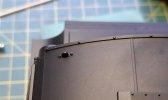
Here the hooks are being added from copper wire. One down, three to go

Then these arrived in the post, so I went off on a tangent and took the buffer beams off. They're not cheap but they are very nice.
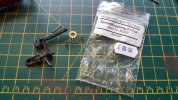
They come with a spit pin to keep the springs in place, but I prefer to use a short length of brass rod bent in the middle. It works just as well and is easier to get in and take out.
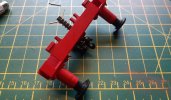
Here's the front beam after refitting. To be honest, the coupling looks a little large as it never struck me when I ordered them, but they are probably to 1:22.5 scale not 1:25. That said I'm happy with them.
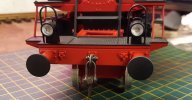
And the rear beam. You can see here that the right hand buffer head has been rubbed flat and the left one rubbed to a dome as per German railway practice.
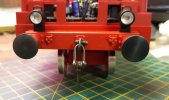
Here the bunker and cab have been placed on the model for the photo. The planks have been painted and had further scraping, but have yet to be weathered. There are one or two gaps in the coal load, but those will be filled with more lumps when the bunker is screwed back to the cab.
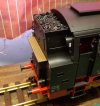
Here's a point regarding Piko's quality control. The model was bought second hand, but came to me in Pristine condition from the original owner. Having almost completely dismantled it I can say that the assembly in the Piko factory was first class. However, working on the cab today I noted that all four cinder guards on the open cab windows were incorrectly fitted. Below are views of both sides after. First the left side after thr one nearest the camera had been removed and refitted. Notice the gap at the bottom of the rear guard.
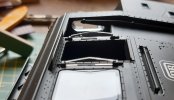
And on the right hand side, you can see both guards are lifting at the bottom. No big deal, but this glazing is quite brittle so it's best not to have to mess about with it. One black mark to Mr. Piko. It's a good job he wasn't in the cab, or he'd have been given a right bollocking!

And to finish off, a view from ground level.
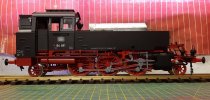
Cheers,
Peter Dunne



